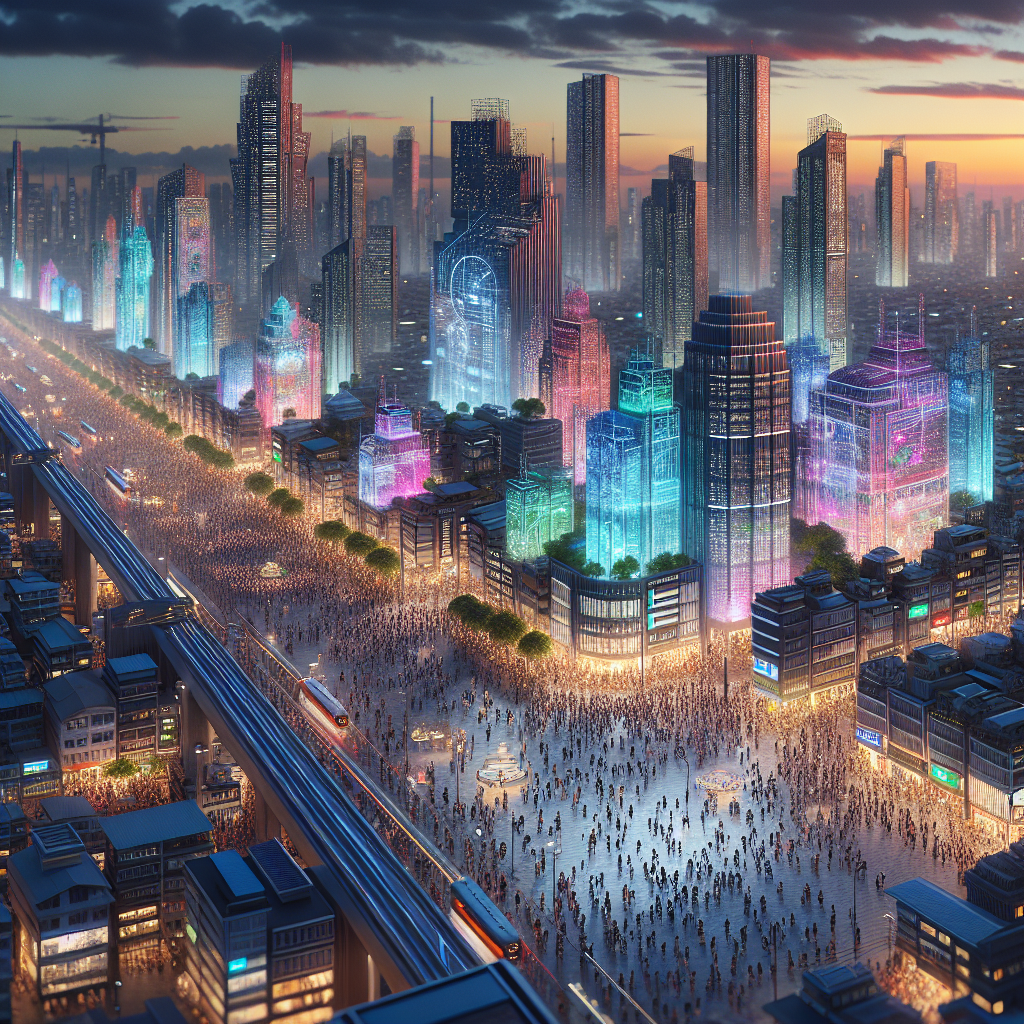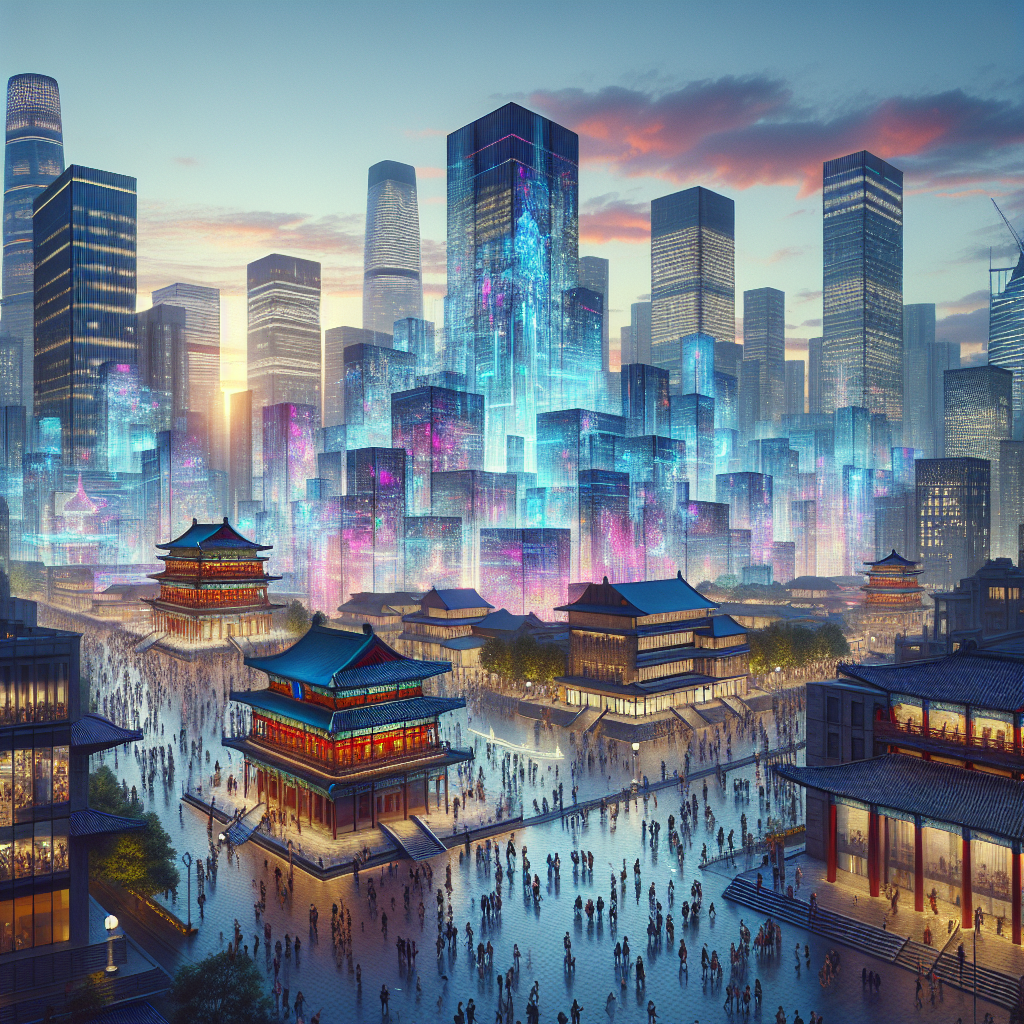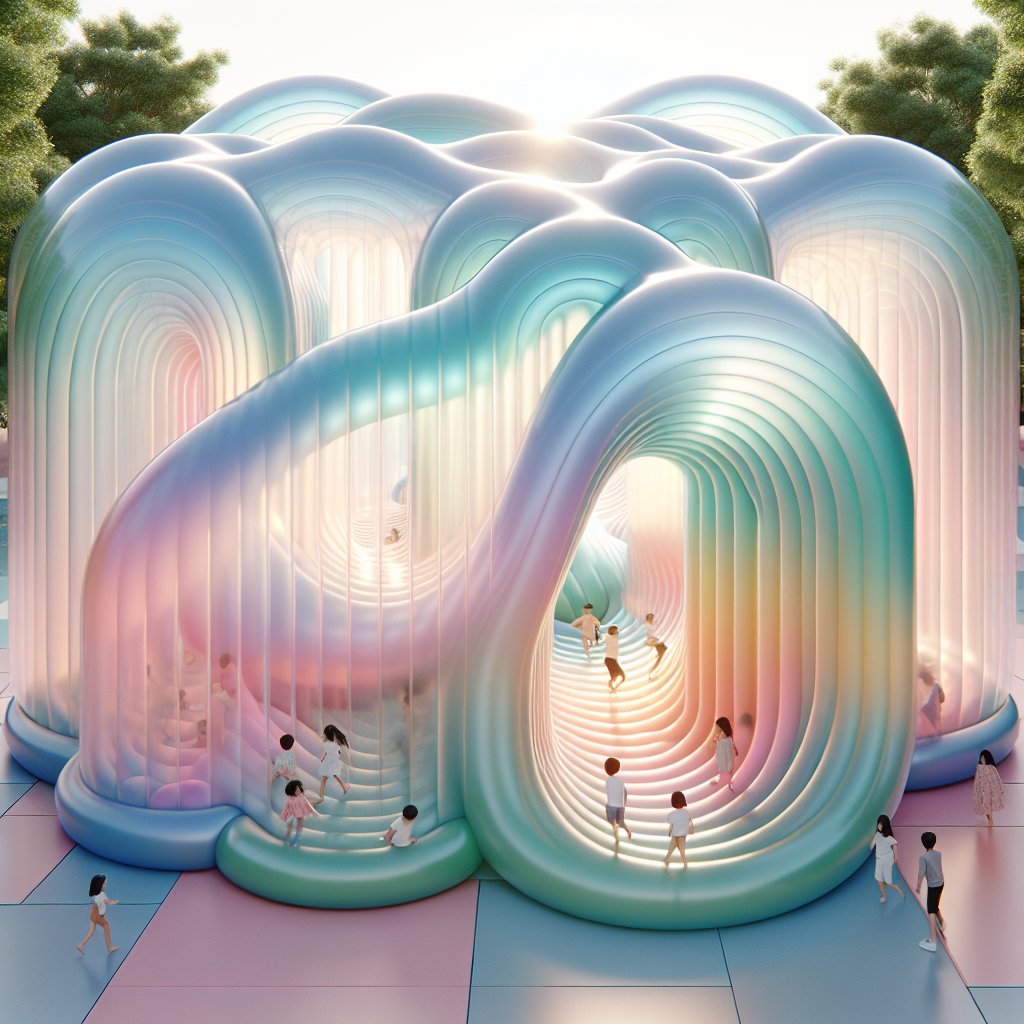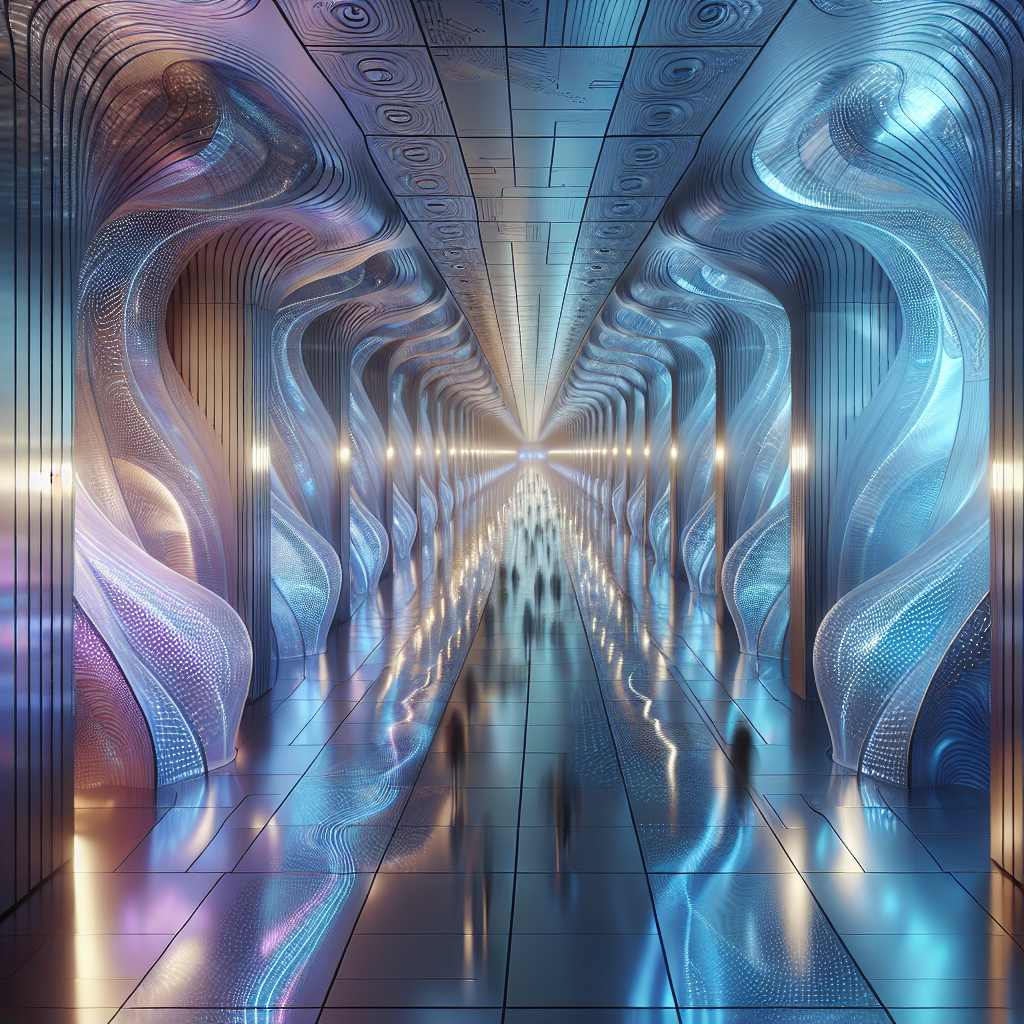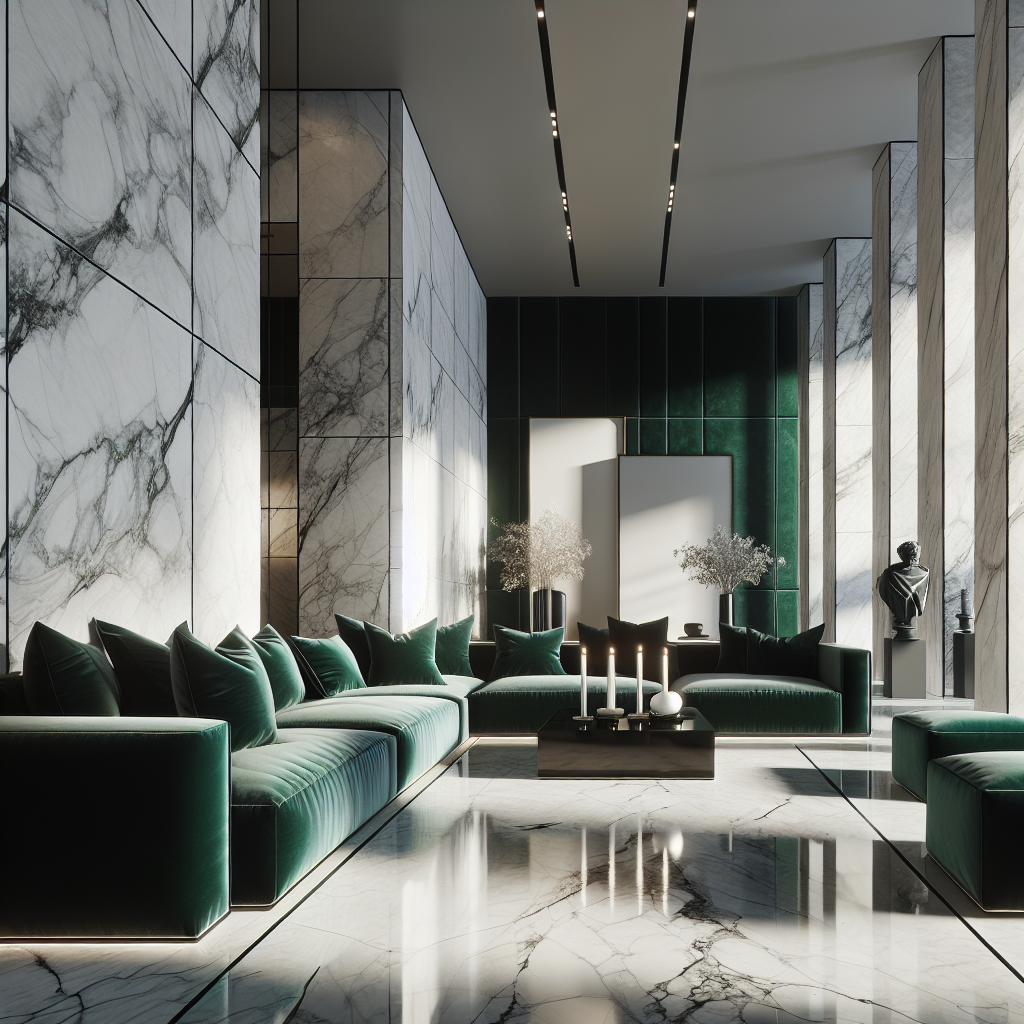Architectural Projections: Illuminating Buildings with Digital Art
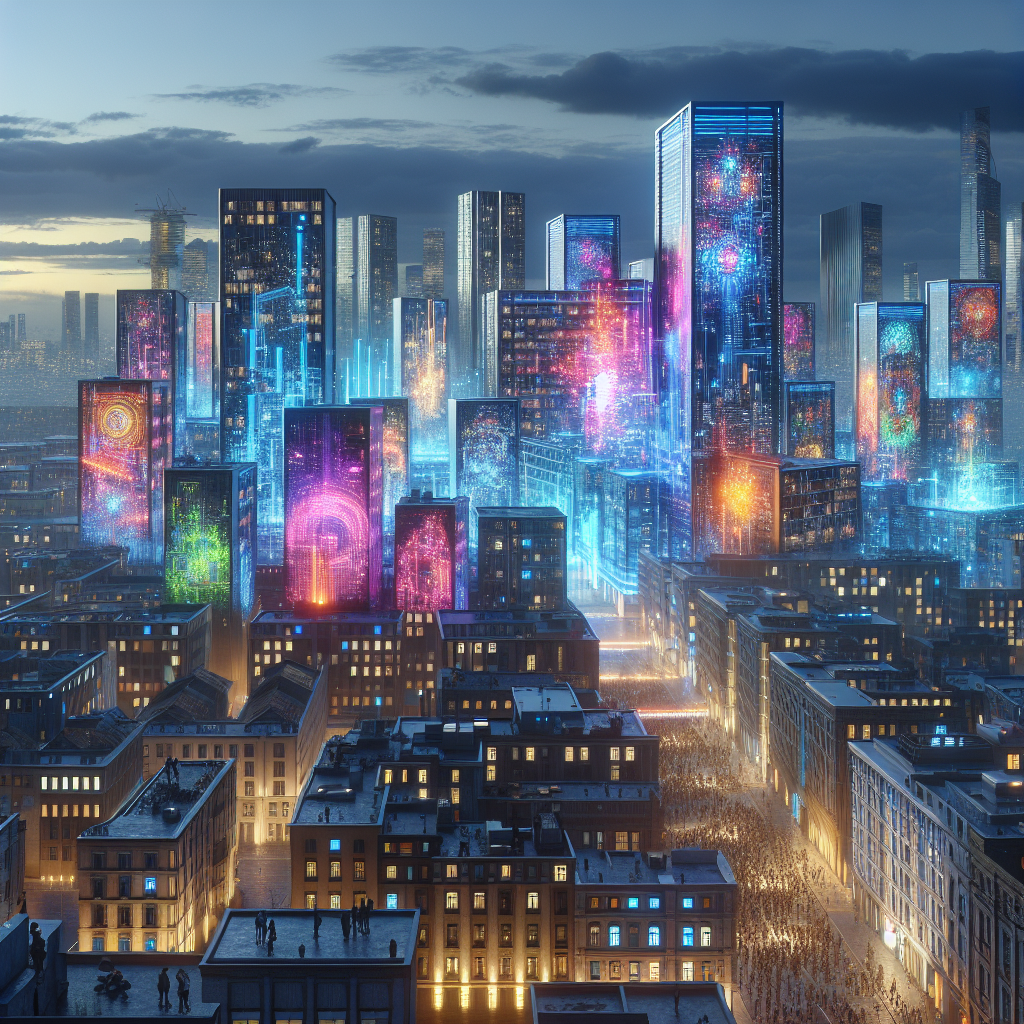
Architectural Projections: The Convergence of Technology and Aesthetics in Digital Art
As the sun dips below the horizon and the city’s lights begin to twinkle, a new kind of luminescence emerges—vivid, dynamic, and utterly captivating. This is the world of architectural projections, where the static surfaces of buildings transform into canvases for digital art, creating a mesmerizing interplay of light and structure. In this realm, the boundaries between reality and imagination blur, offering onlookers an immersive experience that is both ephemeral and profound.
The trend of using digital projections to illuminate buildings is not merely a spectacle of the night; it is a burgeoning field that merges architectural design, digital technology, and contemporary art. It is an innovative form of expression that redefines the urban landscape, turning the facades of edifices into storytelling platforms and interactive displays.
The Evolution of Architectural Projections
Architectural projections have evolved from simple light shows to complex, multimedia installations. Pioneers in this field have pushed the envelope, experimenting with 3D mapping technology to create illusions of depth and movement that defy the flatness of their concrete canvases. The result is a burgeoning art form that can alter our perception of space and architecture, as discussed in The Evolution of Digital Art in Architecture.
Today’s digital artists and architects collaborate to craft experiences that are not only visually stunning but also rich in narrative and cultural significance. Cities around the globe host light festivals that showcase these innovative works, turning architectural landmarks into epicenters of cultural dialogue.
Technological Ingenuity Behind the Projections
The magic of architectural projections lies in the seamless integration of cutting-edge technology and creative vision. High-lumen projectors, sophisticated software, and precise calibration are essential to achieving the clarity and scale required for these installations. The Technological Advancements in Architectural Design delve deeper into the tools and techniques that bring these digital dreams to life.
One cannot overlook the role of video mapping, a technique that involves mapping projected images onto the irregular geometries of building facades. This requires a meticulous understanding of the architectural form to ensure that the visuals align perfectly with the physical structure, creating an illusion that the building itself is animated.
Interactive Projections: Engaging Public Spaces
Architectural projections have transcended beyond mere visual delight; they now engage audiences through interactivity. Sensors and real-time data processing allow spectators to influence the visual narrative, turning public spaces into participatory arenas. This dynamic form of public art fosters a sense of community and personal connection to the urban environment.
Interactive installations such as Interactive Design: Transforming Public Spaces illustrate how digital art can revitalize urban areas, encouraging people to interact with their surroundings in novel ways.
Environmental Considerations and Sustainability
While the allure of architectural projections is undeniable, it is crucial to address the environmental impact of such installations. The energy consumption of high-powered projectors and the potential for light pollution are concerns that artists and designers must navigate responsibly. Sustainable practices, such as using energy-efficient LEDs and scheduling projections to minimize ecological disruption, are essential for the long-term viability of this art form.
Moreover, the ephemeral nature of these projections makes them an environmentally friendly alternative to physical alterations or additions to buildings. By using light as a medium, digital artists can leave the architectural integrity of structures untouched, as highlighted in the Environmental Impact of Lighting on Wikipedia.
Case Studies: Iconic Architectural Projections Around the World
Globally, numerous landmarks have served as canvases for breathtaking projections. The Sydney Opera House in Australia, for instance, is renowned for its annual Vivid Sydney festival, where its sails become the backdrop for stunning visual stories. Similarly, the Grand Palais in Paris has been transformed through light during the Fête des Lumières, captivating audiences with its grandeur.
Another notable example is the Empire State Building in New York City, which has used projections to celebrate events and raise awareness for causes, creating a powerful visual statement in the city’s skyline. These iconic displays are not just feats of creativity but also serve as a testament to the power of digital art in shaping our collective consciousness.
Future Prospects: The Expanding Universe of Digital Art Projections
The potential for architectural projections is boundless. As technology advances, we can anticipate even more sophisticated and interactive displays that will further blur the lines between reality and digital artistry. The integration of augmented reality and virtual reality could offer new dimensions to this medium, allowing for personalized and immersive experiences that were once the stuff of science fiction.
The fusion of architecture and digital art through projections is not just an aesthetic endeavor; it is a cultural phenomenon that reflects our society’s values, challenges, and aspirations. As we look to the future, we can expect these luminous narratives to continue to enchant, provoke thought, and inspire wonder in the hearts of city dwellers and visitors alike.
Architectural projections are more than just light shows; they are a testament to human creativity and technological prowess. They offer a glimpse into a future where art and architecture coalesce to create experiences that are transformative, inclusive, and reflective of our ever-evolving world. The Projection Mapping entry on Wikipedia provides a deeper insight into the technical aspects and historical context of this art form.
As we embrace the night, let us marvel at the illuminated edifices that speak to us in the language of light and shadow, inviting us to imagine, to feel, and to connect with the pulsating heart of the city. The dance of digital art upon the stoic surfaces of our urban landscape is a ballet of brilliance, a symphony of sight, and a celebration of the human spirit.

